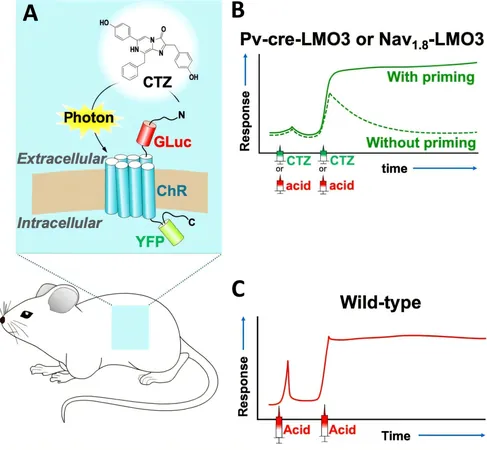
Unmasking the Hidden Risks of Cryptogenic Stroke in Younger Adults
2025-04-23
Author: Arjun
Exploring Stroke Risks for the Under-50 Crowd
A new European study reveals that a blend of traditional and unconventional risk factors significantly influences the likelihood of cryptogenic ischemic strokes in adults under 50. Yet, the dominance of these factors varies significantly depending on the presence of a patent foramen ovale (PFO) – a small opening in the heart.
Traditional vs. Nontraditional Risk Factors
For individuals without a PFO, well-known risk factors such as high blood pressure, smoking, abdominal obesity, and psychosocial stress are the main culprits increasing stroke risk. Conversely, those with a PFO face heightened dangers from nontraditional factors including venous thrombosis, cancer, chronic health conditions, and illicit drug use. Notably, the presence of migraine with aura emerges as a serious threat, amplifying the risk across the board, particularly in women.
A Wake-Up Call for Awareness
Lead researcher Dr. Jukka Putaala from Helsinki University highlights the urgent need for healthcare professionals to recognize and track these nontraditional risk factors. "This critical information often goes unnoticed in patient records," he said, stressing the importance of a thorough screening process.
Rising Incidence of Ischemic Stroke
The incidence of ischemic stroke among younger adults has alarmingly increased in recent decades. While this uptick can partly be attributed to rising traditional risk factors, experts suggest that nontraditional risks are also at play. The recent SECRETO study, which included 523 participants aged 18 to 49 with cryptogenic strokes and an equal number of stroke-free controls, sheds light on this pressing issue.
Data Insights from the SECRETO Study
Among participants, it was revealed that 37.5% had a clinically significant PFO. The investigation analyzed 12 traditional and 10 nontraditional risk factors, along with 5 female-specific factors—highlighting the variations in risk based on PFO presence.
Results showed that without a PFO, each additional traditional or nontraditional risk factor escalated stroke risk significantly. Yet, in those with a PFO, traditional factors showed a weaker link, while nontraditional factors, especially migraine, proved alarming.
Understanding the Stroke Mechanism
The analysis revealed that in patients without a PFO, traditional risk factors accounted for 64.7% of cryptogenic stroke cases compared to only 33.8% in patients with a PFO. Intriguingly, migraine with aura was highlighted as a major individual risk factor for both groups, marking a compelling area for future research.
Conclusions and Future Directions
Experts echo the need for a comprehensive approach in assessing risks for young people, even those seemingly at low risk for strokes. Notable figures like Dr. Daniel Lackland of the American Heart Association have commented on the findings, emphasizing that understanding this interplay between migraine, PFO, and cryptogenic stroke mechanisms is crucial. More research is essential to untangle these intricate relationships.
As the healthcare community turns its gaze towards younger stroke patients, the implications of this study could reshape preventive strategies, underscoring the critical importance of recognizing and addressing both traditional and nontraditional risk factors.




 Brasil (PT)
Brasil (PT)
 Canada (EN)
Canada (EN)
 Chile (ES)
Chile (ES)
 Česko (CS)
Česko (CS)
 대한민국 (KO)
대한민국 (KO)
 España (ES)
España (ES)
 France (FR)
France (FR)
 Hong Kong (EN)
Hong Kong (EN)
 Italia (IT)
Italia (IT)
 日本 (JA)
日本 (JA)
 Magyarország (HU)
Magyarország (HU)
 Norge (NO)
Norge (NO)
 Polska (PL)
Polska (PL)
 Schweiz (DE)
Schweiz (DE)
 Singapore (EN)
Singapore (EN)
 Sverige (SV)
Sverige (SV)
 Suomi (FI)
Suomi (FI)
 Türkiye (TR)
Türkiye (TR)
 الإمارات العربية المتحدة (AR)
الإمارات العربية المتحدة (AR)